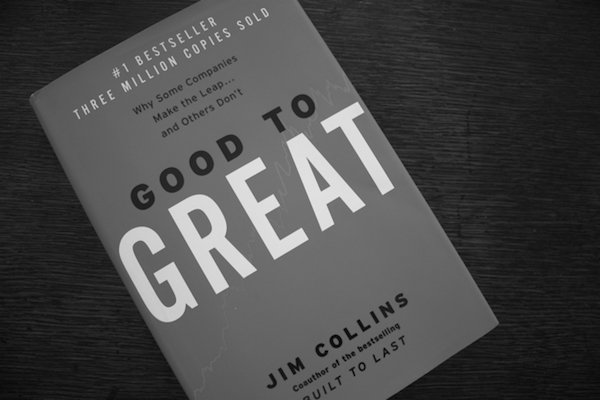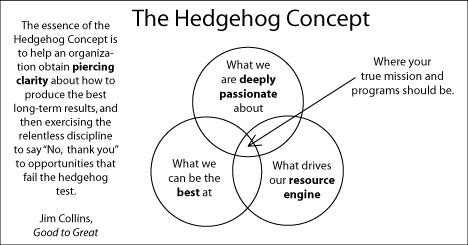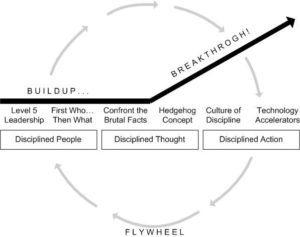
Good to Great Revisited
When I graduated college and commenced my professional journey I quickly realized there was a lot I did not know. While I lightly considered continuing my education, I was earning good money and was tired of traditional schooling. I wanted to get to work. So I began to round out my skill set and teach myself through reading, and the trial and error of experience. I rapidly consumed books, many times late into the night. My choices ranged from Public Relations for Dummies, to historical business chronicles like Barbarians at the Gate, to business philosophy books, including The Dip by my rabbi Seth Godin. None of these books, though, have had the ongoing impact of Good to Great: Why Some Companies Make the Leap…and Others Don’t, by Jim Collins. Not only did it have one of the most amazing titles in the history of books, Good to Great provided a reliable blueprint for what it took to go from average to awesome.
Good to Great is based on a research study in which Collins and his team identify “companies that generated cumulative stock returns that beat the general stock market by an average of seven times over fifteen years, better than twice the results delivered by the companies considered the world’s greatest, such as Coca-Cola, Intel, General Electric, and Merck.” Keep in mind this book was released in 2001. Once the companies were identified, Collins and his team studied the practices of each organization and extracted seven key competencies the companies shared. Over the last fifteen years I have continually returned to this book to check myself against those competencies, and ensure that I am doing my best to make decisions aligned with these findings. With this in mind, I felt compelled to share these competencies with you, as it seems this great business book no longer has the visibility it once had.
The Seven Key Competencies of Good to Great Companies
- Level 5 Leadership: These companies were led by leaders that exhibited a unique combination of personal humility and indomitable will. Level 5 leaders are humble, yet driven to do anything on behalf of the company’s mission.
- First Who, Then What: These companies focus on getting the right people on the bus and then figuring out where to go. Getting the right people on the team is more important than having the right strategy, because the right people will determine the best strategy.
- Confront the Brutal Facts: Great companies confront the brutal truth of situations, yet at the same time, never give up hope. To make good decisions you must allow yourself to see the truth—only then can you take on the challenge and rise with certainty.
- Hedgehog Concept/Three overlapping circles:
- What lights your fire (“passion”)?
- What could you be best in your world at (“best at”)?
- What makes you money (“driving resource”)?

- Culture of Discipline: Most companies fail not because of the lack of opportunity but because there is too much opportunity, and they spread themselves too thin.
- Technology Accelerators: Great companies use technology only to accelerate growth, within their areas of focus—aka “the three circles of the hedgehog concept” (see above).
- The Flywheel: The media is obsessed with moments of breakthrough and inspiration. But if someone came to you and enquired as to what was the one big push that made your company grow so fast, what would you say? You wouldn’t be able to answer! Because there was no singular thing you did that made the difference. It’s about consistency over a long period of time. A key concept here is to realize that no single push makes a difference, no matter how herculean the effort. So you have to be thinking about cumulative effects, not looking for the dramatic singular win.

While everyone has the desire to do something great, it turns out much of what the media promotes about how to reach greatness is misleading. What Good to Great explains so well, and backs up through quantitative research, is the true path. When irrational exuberance takes over, it is incredibly sobering to remind yourself that the true path to greatness is a combination of disciplined people, thought, and action.
We must remember that every good-to-great leap began with a Level 5 leader who motivated the enterprise more with inspired standards than inspiring personality. We can and should all aspire to apply that unique blend of personal humility, incredible ambition, and indomitable will to a cause greater than ourselves.

